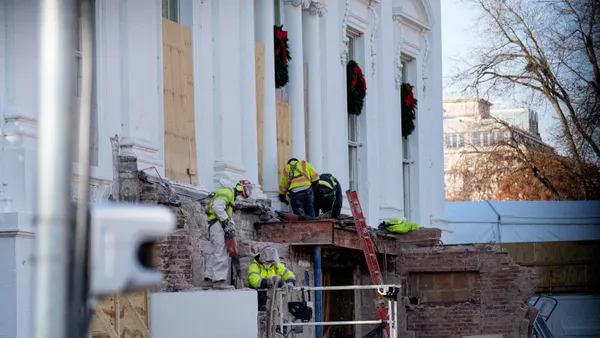Dive Brief:
-
A lawsuit filed by U.S. housing organizations in a federal district court in California against Fannie Mae alleges that the government-backed mortgage lender does not maintain and market foreclosures in primarily black and Latino neighborhoods to the same standards as it does those in primarily white neighborhoods, according to The New York Times.
-
It follows an investigation between July 2011 and October 2015 into Fannie Mae’s real-estate related activities in neighborhoods in 38 metro areas. The lawsuit contains evidence from more than 2,300 foreclosures owned and maintained by Fannie Mae, and it includes 49,000 photographs evidencing the difference in treatment.
- The investigation found that in predominately black and Latino neighborhoods, the average number of exterior maintenance deficiencies in foreclosures was 50% higher compared to predominately white neighborhoods.
Dive Insight:
The lawsuit, filed by the National Fair Housing Alliance and local housing groups, alleges that the evidence outlined in the suit demonstrates a pattern of discriminatory conduct by Fannie Mae. For example, the lawsuit claims that Fannie Mae’s foreclosed properties in mostly white neighborhoods were far more likely to have their window and doors secured or repaired, trash and graffiti removed, lawns mowed and invasive plans maintained.
The issue of discrimination in the housing industry is nothing new, but recent efforts intend to curb its legacy and prevent it from going forward. Last year, the Obama administration unveiled new rules requiring cities to show how they plan to use federal funds to lessen racial disparity in housing. The U.S. Department of Housing and Urban Development has made data on housing patterns available to track where better housing policy is needed.
In a recent report, Freddie Mac noted the potential for gains in homeownership among “non-white demographics,” according to HousingWire, shouldn’t be overlooked. Yet mortgage access for black and Hispanic borrowers tends to come at a higher cost, according to a February 2016 study by the National Bureau of Economic Research. The odds of Hispanic Americans and black Americans getting a high-cost mortgage was 78% and 105%, respectively, even considering influencing factors like credit score and debt-to-income ratio, thus limiting homeowning potential.
A November report from real estate website Zillow found that black and Hispanic borrowers are less likely than white and Asian borrowers to qualify for a conventional mortgage. While that number is declining, the gap between white and black homeownership levels has been largely the same for a century.
For more housing news, sign up for our daily residential construction newsletter.













